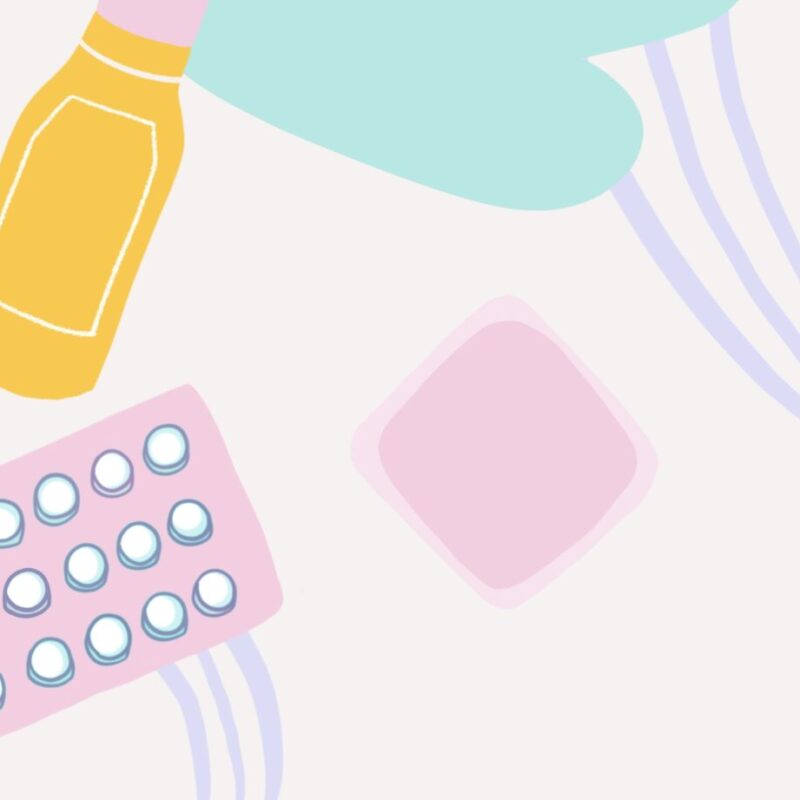10 FAQ about HRT
Want to find out more about hormone replacement therapy? Here’s what you need to know
1. How does HRT work?
Hormone replacement therapy works by topping up or replacing your missing hormones. During perimenopause, levels of oestradiol (a type of oestrogen) and progesterone often fluctuate hugely on a daily, even hourly basis and then gradually reduce. During menopause, levels of oestradiol, progesterone and testosterone decline and remain low. These hormones work as chemical messengers throughout your entire body, influencing every single cell and organ. Women are prescribed hormones to both improve their symptoms as well as their future health. HRT will usually contain oestradiol and progesterone, and sometimes testosterone. These hormones are usually prescribed separately, and the type and dose will be individualised to help control your symptoms as well as your future health.
2. Do I have to wait until my symptoms are bad/my periods have stopped before starting HRT?
Symptoms are commonly felt before actual menopause occurs (before your periods stop all together) – during perimenopause. Many women find that they have more severe symptoms during this time than when they are menopausal. You don’t have to wait for your periods to stop before starting HRT. You also do not have to wait for your symptoms to become severe before taking HRT. In fact, the health benefits (including reduction of heart disease and osteoporosis risk) with taking HRT are greater if HRT is started earlier. However, there are still benefits of taking HRT at any age.
RELATED: Perimenopause, menopause and HRT: everything you need to know
3. Which HRT is best?
HRT comes in numerous formats, which means it can be individualised to suit your needs, taking into account your health and preferences. However, with so many different types of HRT available it can be confusing so you should discuss your options with a healthcare professional. The safest and most regulated type of HRT – and that prescribed by the NHS – is body identical (natural) HRT. This includes oestradiol you take through your skin in a patch, gel or spray, and micronised progesterone, usually known as Utrogestan in the UK and testosterone as a gel or cream. These are usually made from soy or yam plants.
RELATED: Body identical hormones
4. What are the side effects of HRT?
HRT is usually really well tolerated and few people have side effects. The most common side effects that can occur in the first few weeks after starting HRT are sometimes known as the “four Bs”:
Bleeding: this may come and go or last for a few weeks. If you are perimenopausal when you start HRT, your bleeding pattern may alter initially and may take three to six months to settle into a regular pattern. If you are menopausal when you start HRT (are no longer having periods), bleeding may occur, but this usually settles within three to six months.
RELATED: Vaginal bleeding during perimenopause and menopause
Breasts: your breasts may become tender, painful and more sensitive. This can be due to the oestradiol or progesterone and usually settles with time.
Bloating: if your HRT regimen includes progesterone or a synthetic progestogen, you may experience a bloating feeling, which usually improves.
Blues: You may find that your mood is affected, or you feel more emotional than usual. If these feelings persist then you may need to change your dose or type of HRT.
Side effects usually settle over time. If side effects have not settled after 3-4 months, discuss them with your health professional. You may find that changing brands, the delivery method (eg, from tablets to patches) or type of hormone might help improve side effects.
RELATED: What to expect when you start HRT
5. Can HRT cause weight gain or help with weight loss?
There’s little evidence that taking HRT can lead to weight gain. You may gain some weight during menopause due to the metabolic changes that occur [1].
Many women find that they lose weight when they are prescribed the right dose and type of HRT [2]. In addition, you may find that replacing your missing hormones improves symptoms – such as joint and muscle pains, poor sleep and low mood – resulting in you being more able to exercise and eat a balanced diet, leading to weight changes.
RELATED: Will HRT make me gain weight?
6. Can HRT cause cancer?
For most women the benefits of HRT outweigh the risks. When assessing risk and reading headlines about HRT and cancer risk, it’s important to know what type of HRT studies are referring to – many involve older, synthetic types rather than the body identical (natural) types that are more commonly prescribed now.
For instance, while combined synthetic HRT may slightly increase the risk of breast cancer (an additional four cases per 1,000 women), oestrogen-only HRT slightly decreases it (four fewer cases). There is no evidence that women who take oestradiol with body identical progesterone have an increased risk of breast cancer [3].
There is no evidence of a negative effect of taking HRT on prognosis of other cancers [4].
RELATED: Understanding the benefits and risks of HRT: downloadable visual aids
7. Can HRT stop periods?
If you are perimenopausal (still having periods), taking HRT may have an effect on your periods, depending on the type. Cyclical/sequential HRT (where you take oestradiol all the time and progesterone for only part of the month) can often help regulate your periods and many women find their periods become lighter too. Continuous HRT (where you take oestradiol all the time and also progesterone every day) can usually completely stop your periods. This can take a few months.
The Mirena coil can make periods lighter and shorter, and usually causes them to stop altogether.
RELATED: Changes in bleeds: your FAQ
8. Does it matter where I apply my patches/gel/spray?
Licensed directions are to rub oestradiol gel into the outside of your upper arm or inside of your upper thigh. Some women prefer to rub it in other places such as the shoulder blades or lower abdomen. Use the spray on the inner part of your forearm or the inner part of your thigh. Patches should be stuck onto the skin below your waist – on your bottom or upper thigh. Rub testosterone cream/gel into the lower part of your tummy or your outer thigh. You may want to vary the place you rub the cream or gel every few days to avoid possible growth of a few dark hairs.
HRT is licensed to be applied on these areas, but your skin is used as a vehicle for delivery of the hormone oestradiol through your skin so sometimes women use different areas of their bodies. Absorption of oestradiol through your skin can really vary in different areas of your body and between different women [5].
RELATED: Oestrogen in patches, gels or sprays
9. What do I do if I miss a dose?
If you take or apply your medication a couple of hours later now and then, it shouldn’t make any difference. Missed doses of progesterone can lead to breakthrough bleeding. If you forget to take your progesterone capsule one evening, it’s not a good idea to take it in the morning if you find it usually makes you drowsy. Missing the occasional dose is not a huge issue but if you are regularly missing doses then speak to your healthcare professional about how to make your medicines fit more easily into your daily routine. Don’t double up on the dose as this may cause worse side effects than the missed dose, such as a headache or breast tenderness.
RELATED: Help! I’ve forgotten to take my HRT
10. What do I do if HRT stops working?
Many women need their HRT treatment regime altered over time. You may experience a noticeable improvement initially but then not as much as you were hoping for, or there may be a return of some symptoms. You may need a higher dose; you may need to try a different way of taking the hormone or to try a different brand or type. You might benefit from adding in testosterone. Whatever the reason, discuss it with your health professional or see a menopause specialist if you are not satisfied.
RELATED: What to do if HRT seems to have stopped working for you
References
- Lobo R.A., Gompel A. (2022), ‘Management of menopause: a view towards prevention’, Lancet Diabetes Endocrinol. 10(6): PP457-470. doi: 10.1016/S2213-8587(21)00269-2
- Lovre D., Lindsey S.H., Mauvais-Jarvis F. (2016), ‘Effect of menopausal hormone therapy on components of the metabolic syndrome’, Ther Adv Cardiovasc Dis. 11(1): pp33–4310.1177/1753944716649358
- Women’s Health Concern. Understanding [NM5] the risks of breast cancer.
- MacLennan A.H. (2011), ‘HRT in difficult circumstances: are there any absolute contraindications?’, Climacteric. 14(4): pp409-17. doi: 10.3109/13697137.2010.543496
- Glynne S., Reisel D., Kamal A., Neville A., McColl L., Lewis R., Newson L. (2025), ‘The range and variation in serum estradiol concentration in perimenopausal and postmenopausal women treated with transdermal estradiol in a real-world setting: a cross-sectional study’, Menopause. 32(2): pp103-111. doi: 10.1097/GME.0000000000002459




